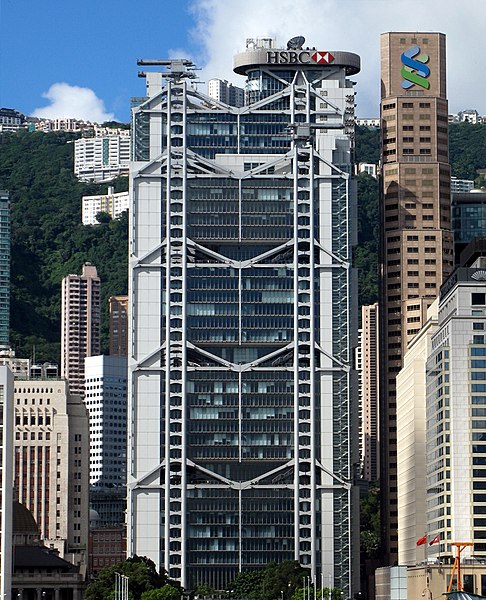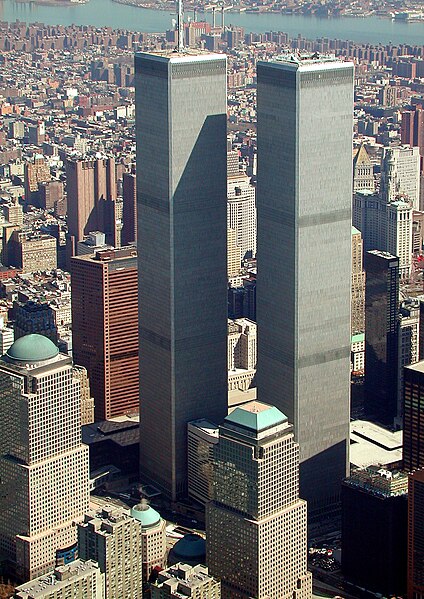High-tech architecture, also known as structural expressionism, is a type of late modernist architecture that emerged in the 1970s, incorporating elements of high tech industry and technology into building design. High-tech architecture grew from the modernist style, utilizing new advances in technology and building materials. It emphasizes transparency in design and construction, seeking to communicate the underlying structure and function of a building throughout its interior and exterior. High-tech architecture makes extensive use of aluminium, steel, glass, and to a lesser extent concrete, as these materials were becoming more advanced and available in a wider variety of forms at the time the style was developing – generally, advancements in a trend towards lightness of weight.
The Lloyd's building in London, by Richard Rogers
The HSBC Hong Kong headquarters, completed in 1985
The Original World Trade Center in New York City, by Minoru Yamasaki. The Twin Towers had completely open floor plans, with zero internal columns.
Sainsbury Centre in Norwich, by Foster and Associates
Michael Hopkins (architect)
Sir Michael John Hopkins was an English architect.
Hopkins House, Hampstead (1976)
The London 2012 Olympic Velodrome. Stratford, London
Portcullis House, Westminster, London
Mound Stand at Lord's Cricket Ground (left)








